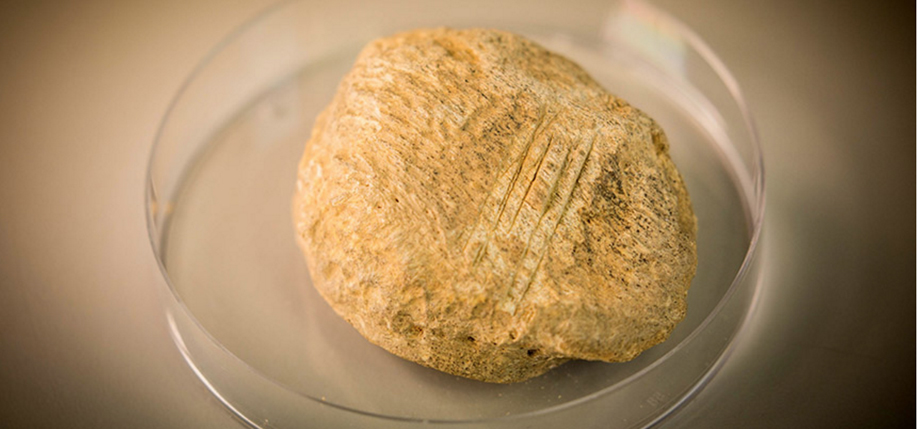An exciting artifact that changes what is currently known about human history in Ireland has been found in a cardboard box. A bear bone, which was discovered in a cave in Co. Clare in 1903 and lay unexamined in storage at the National Museum of Ireland until earlier this year, exhibits evidence that the hapless beast had been butchered by human hands 12,500 years ago, more than 2,000 years before scientists believed humans began to live on the island.
The bear’s patella, or knee bone (pictured left), was re-examined by Dr. Marion Dowd, an archaeologist at the Institute of Technology Sligo, and Dr. Ruth Carden, a research associate with the National Museum of Ireland, who had the bones temporal origins examined through radiocarbon dating.
“Archaeologists have been searching for the Irish Palaeolithic since the 19th century, and now, finally, the first piece of the jigsaw has been revealed,” Dowd told IT Sligo News. “This find adds a new chapter to the human history of Ireland.”
As a specialist in cave archaeology, Dowd was naturally interested in the bear patella and together with Carden, had the bone radiocarbon dated at Chrono Centre at Queen’s University Belfast, and then at University of Oxford to test the validity of the initial result. Both indicated that the bear was butchered about 12,500 years ago, while three separate bone specialists confirmed that the cut marks were made on fresh bone, ultimately proving that they were essentially the same age as the patella, and thus, that human life existed in Ireland some 2,500 years earlier than previously thought.
“From a zoological point of view, this is very exciting, since up to now we have not factored in a possible ‘human-dimension’ when we are studying patterns of colonization and local extinctions of species to Ireland,” noted Carden, to which she added, “This paper should generate a lot of discussion within the zoological research world and it’s time to start thinking outside the box… or even dismantling it entirely!” ♦
Bear Bone Discovery Potentially Re-writes Human History in Ireland


This find adds a new chapter to the human history of Ireland,” said Marion Dowd, an archaeologist at the Institute of Technology Sligo who made the discovery along with Ruth Carden, a research associate with the National Museum of Ireland.